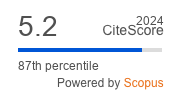Article | Open Access
The EU’s Digital Footprint: Shaping Data Governance in Japan and Singapore
| Views: | 1134 | | | Downloads: | 1642 |
Abstract: The rapid development of the internet and information and communication technologies over the past few decades has led to the emergence of a new digital order, attracting significant attention from both academia and policymakers. In the global digital domain, the EU has assumed a distinctive role in shaping and influencing digital norms and standards. This status stems from the EU’s pioneering efforts, ranging from the Council of Europe’s Convention 108 (1981) to the more recent General Data Protection Regulation, which has exerted far‐reaching extraterritorial effects, influencing data laws and regulatory practices beyond the EU’s borders. However, there remains a lack of sufficient research on how these actors have progressively enacted and revised their data regulations in response to evolving EU standards. To address this gap, this article adopts a qualitative approach to examine how the EU’s evolving data regulations have diffused to and been adopted by two Asian countries—Japan and Singapore. By categorising diffusion mechanisms into incentive, socialisation, learning, competition, and emulation, this research further explores the operative mechanisms underpinning the diffusion process. This research argues that the EU’s diffuse‐ability in Japan has demonstrated a gradual strengthening trend, with socialisation functioning as the primary mechanism driving this process. In contrast, the EU’s diffuse‐ability in Singapore has remained relatively weak, with competition serving as the dominant mechanism.
Keywords: data governance; diffuse‐ability; EU; Japan; Singapore
Published:
© Danni Zhang. This is an open access article distributed under the terms of the Creative Commons Attribution 4.0 license (http://creativecommons.org/licenses/by/4.0), which permits any use, distribution, and reproduction of the work without further permission provided the original author(s) and source are credited.


